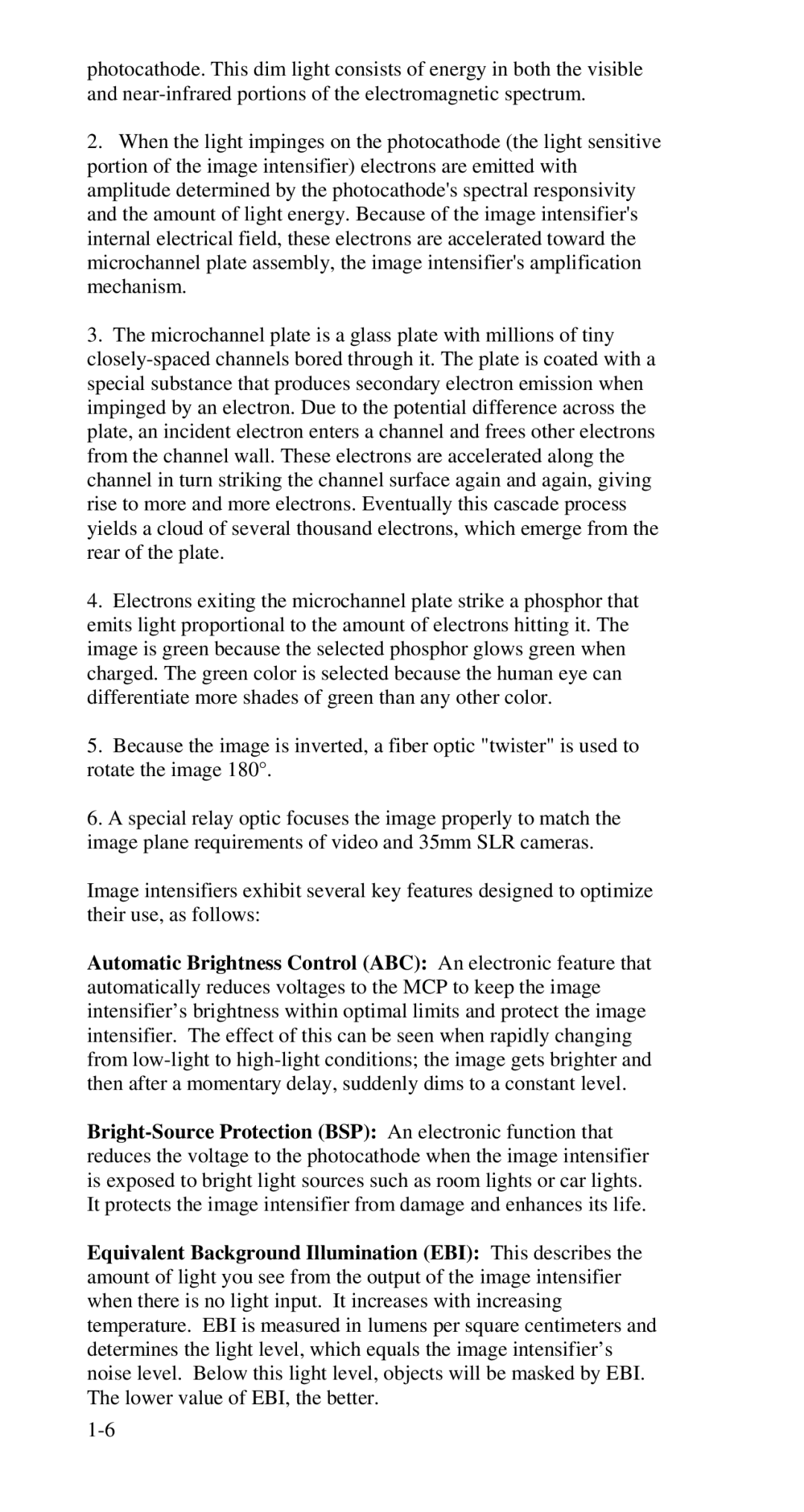photocathode. This dim light consists of energy in both the visible and
2.When the light impinges on the photocathode (the light sensitive portion of the image intensifier) electrons are emitted with amplitude determined by the photocathode's spectral responsivity and the amount of light energy. Because of the image intensifier's internal electrical field, these electrons are accelerated toward the microchannel plate assembly, the image intensifier's amplification mechanism.
3.The microchannel plate is a glass plate with millions of tiny
4.Electrons exiting the microchannel plate strike a phosphor that emits light proportional to the amount of electrons hitting it. The image is green because the selected phosphor glows green when charged. The green color is selected because the human eye can differentiate more shades of green than any other color.
5.Because the image is inverted, a fiber optic "twister" is used to rotate the image 180°.
6.A special relay optic focuses the image properly to match the image plane requirements of video and 35mm SLR cameras.
Image intensifiers exhibit several key features designed to optimize their use, as follows:
Automatic Brightness Control (ABC): An electronic feature that automatically reduces voltages to the MCP to keep the image intensifier’s brightness within optimal limits and protect the image intensifier. The effect of this can be seen when rapidly changing from
Equivalent Background Illumination (EBI): This describes the amount of light you see from the output of the image intensifier when there is no light input. It increases with increasing temperature. EBI is measured in lumens per square centimeters and determines the light level, which equals the image intensifier’s noise level. Below this light level, objects will be masked by EBI. The lower value of EBI, the better.
